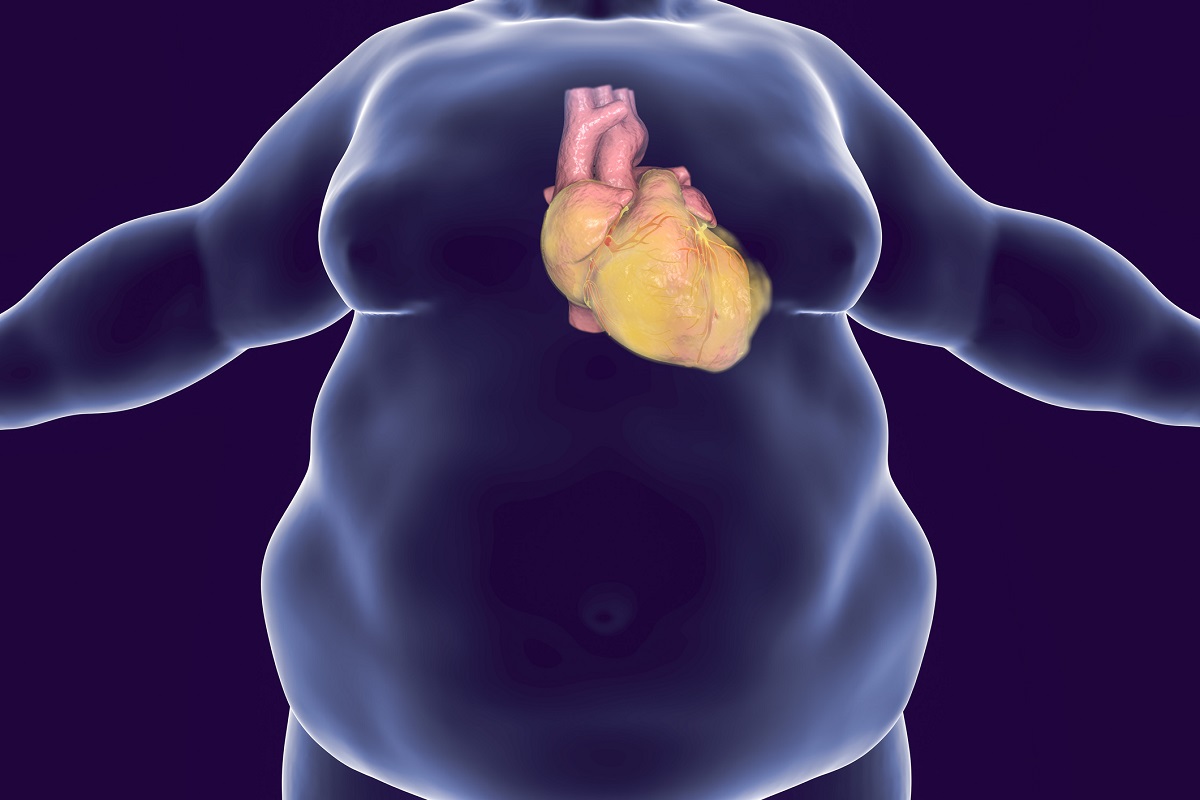- tribune.cz - Paradox of obesity or reverse epidemiology, Prof. MUDr. Štěpán Svačina, DrSc. III Internal Clinic - Department of Endocrinology and Metabolism, 1st Faculty of Medicine, Charles University in Prague
- obesitas.sk - Compendium of medicine, MUDr Alena Mosnárová, CSc MUDr Ľubomíra Fábryová, PhD RNDr Milica Šarmírová
- solen.sk - Obesity in childhood and adolescence, MUDr. Eva Vitáriušová, PhD. 1, MUDr. Katarína Prochotská, PhD. 1, doc. MUDr. Ľudmila Košt'álová, CSc.1, MUDr. Anna Hlavatá, PhD., MPH 1, MUDr. Zuzana Priblincová, PhD. 1, prof. MUDr. László Kovács, DrSc, MPH1,2 1Children's Clinic of Comenius University Faculty of Medicine and Children's University Hospital with Polyclinic in Bratislava 2 Department of Genetic Diagnostics of the Children's Clinic of Comenius University Faculty of Medicine and Children's University Hospital in Bratislava
- who.int - Obesity and overweight
- healthline.com - Obesity
- who.int - Obesity - The Human Epidemic
Obesity and its health consequences. It's not just an aesthetic problem

Obesity has been called an epidemic of humanity. It significantly reduces the quality of life and shortens its duration. It is not a shame, but a serious health and aesthetic problem.
Most common symptoms
- Malaise
- Chest pain
- Breast enlargement in men - Gynecomastia
- Joint Pain
- Leg Pain
- Back Pain
- Increased body temperature
- Spirituality
- Strie
- Depression - depressed mood
- Oily skin
- Gaining weight
- Sweating
- Overweight
- Swelling of the limbs
- Menstrual cycle disorders
- Mood disorders
- Fatigue
- Anxiety
- High blood pressure
- Decrease in libido
- Increased appetite
- Increased blood sugar levels
Characteristics
Obesity is a disease of civilization with a nutritional disorder. It is characterized by excessive deposition of adipose tissue in the body. The ratio of fat to other tissues in the body is unfavorable.
Excessive fat deposition in the body causes deterioration of health. Obesity causes several diseases and threatens the health of a person in many ways.
Overweight people are not only at risk of serious health hazards but also social and psychological problems. They are often depressed and have lowered self-esteem.
Obesity is not only found in the adult population. It also affects children and adolescents. Childhood obesity is very common in the world today.
A large number of the population is overweight or obese. This impairs their quality of life and shortens their life expectancy.
It is predicted that by 2025, one in five people will be obese. According to statistics, the majority of the population is overweight. Around a quarter of both men and women are obese. Childhood obesity is on the rise.
The most common methods of measuring the risk of obesity are the Body Mass Index (BMI).
The BMI index is used to classify overweight and obesity in adults. It estimates the amount of body fat and the associated health risks. It is calculated based on the ratio of height to body weight.
In children, the age of the child should be taken into account when determining obesity.
In addition to BMI itself, waist circumference plays a role.
In abdominal obesity, waist circumference is greater than 88 cm in women (not pregnant) and greater than 102 cm in men. The prevalence of overweight and obesity in Europe is an alarming 50%.
Table with weight classification according to BMI and risk level for the body
| BMI value | Characteristics | Health risk level |
| 18,5-24,9 | Normal weight | None |
| 25-29,9 | Overweight - overweight | Moderate risk |
| 30-34,9 | Grade I obesity | Moderate risk |
| 35-39,9 | Grade II obesity | High risk |
| 40-49,9 | Stage III obesity - morbid obesity | Life-threatening risk |
| 50-59,9 | Super obesity | Life-threatening risk |
| More than 60 | Super super obesity | Life-threatening risk |
Click on the link to calculate your BMI using the calculator
BMI: Calculator + Formula
Calculator: BMI for Kids
WHR Index Calculator
Degrees of obesity and their effect on life expectancy:
- Grade 1 obesity shortens life by 3 years.
- Grade 3 obesity shortens life by up to 8-10 years.
A BMI over 35 has up to twice the risk of death from cardiovascular disease.
Obesity is divided into endogenous and exogenous.
Endogenous (secondary) obesity occurs in conditions with excessive or insufficient hormone secretion. These include hypothyroidism, low growth hormone production in children, use of certain medications, glucocorticoids, sedatives, neuroleptics, antihistamines, antiepileptics, and genetic diseases.
Exogenous obesity is an excess of adipose tissue compared to other tissues in the body. This obesity cannot be classified with other diseases and syndromes. The disproportion between energy intake and energy expenditure is involved in its development.
Calculation of BMI for adults
BMI calculation for children
WHR - waist and hip circumference
Causes
The underlying cause is an energy imbalance between the intake and consumption of calories from food. Increased intake of energy foods and drinks with high sugar content, reduced physical activity, sedentary lifestyle.
Obesity is preventable.
What causes it? Intake of large amounts of calories, inadequate calorie burning and lack of exercise.
Genetics is also a common cause. It affects the way the body processes food into energy and how fat is stored. Genetics is involved in the development of obesity in 50% of cases. The rest is environmental.
Heredity is often linked to a reduced ability to burn nutrients and physical activity levels. Dietary habits, the types of food eaten and the amount eaten at home are also hereditary.
Aging leads to loss of muscle mass and slower metabolism. This makes it easier to gain weight in older age.
Lack of sleep can lead to hormonal changes. They make a person feel more hungry and crave for more calorie dense foods.
Pregnancy is also a risk factor for obesity. After giving birth, it is harder to shed extra pounds. Some women gain weight more easily because of lifestyle changes.
Some health problems can lead to weight gain and then obesity:
- Polycystic ovary syndrome is the result of a hormonal imbalance.
- Prader-Willi syndrome is a rare condition present at birth. It causes excessive hunger.
- Cushing's syndrome is caused by high levels of the stress hormone cortisol.
- Hypothyroidism is insufficient thyroid function.
- Other diseases that can cause pain leading to decreased activity.
Several factors can be behind the development of obesity. Often it is a combination of several of them. It is typically a combination of various factors such as genetics, environment, lifestyle, habits, fast food, depression, certain antidepressants, smoking cessation, medications, steroids, birth control.
Stress, depression and alcohol are also important contributors to weight gain.
Heredity and genetic predispositions also have an influence. Excessive food intake and lack of exercise are particularly important. These are the main causes of obesity.
Symptoms
Obesity is not a disease, but a lifestyle choice. It is a kind of failure to regulate normal weight and energy intake. Subsequent disease is a consequence of obesity. Overweight and obesity impair the functions of the human body.
Obesity is associated with an increase in morbidity and increased mortality.
Obesity can be recognised primarily by visible extreme overweight, especially in the waist or thigh area. In men, fat is most often deposited around the waist, in women it is mainly on the thighs or buttocks.
Weight gain usually takes a longer period of time. In both men and women, breast enlargement is caused by excessive fat deposition in these areas.
Currently, we know of more than 200 complications and diseases associated with obesity.
There is a 2 times higher risk of heart disease,
a 3 to 7 times higher risk of stroke,
an increased risk of type 2 diabetes,
an increased incidence of depression,
a higher incidence of cancer,
can cause chronic kidney disease with subsequent need for dialysis,
even the need for a kidney transplant.

Obesity affects cardiovascular disease and puts strain on bones, joints and internal organs.
It also occurs:
- High blood pressure
- Dyslipidemia
- Elevated cholesterol and fat in the blood
- Stroke
- Type 2 diabetes
- Some cancers, e.g. breast, ovarian, prostate, kidney, gallbladder, colon
Risk increases with increasing BMI.
Other complications associated with obesity:
- Gynaecological problems, endometriosis, infertility
- Gallbladder stones
- Sleep apnea, short-term respiratory arrest during sleep
- Snoring during sleep
- Musculoskeletal disorders, increased strain on bones and joints
- Skin diseases, mycoses, eczema, cellulitis
- Psychosocial complications - Obese people suffer from reduced self-esteem, depression, anxiety, eating disorders, nighttime binge eating and bulimia.
- Increased inflammation in the body - Inflammation is a risk factor for cancer and type 2 diabetes
Fatness also manifests itself in other symptoms that are usually already consequences of it. These include fatigue, swelling of the lower limbs, back and joint pain especially in the lower limbs. Sometimes there is excessive sweating or an increase in blood sugar. However, this may not occur in every person. Excessive fat deposition also shows up on the skin and hair. They are usually fatter than the average person.
Obesity in childhood is linked to obesity in adulthood, premature death and disease in adulthood. Obese children have breathing problems. Children are also at increased risk of fractures, high blood pressure, heart disease, diabetes and psychological problems.

Diagnostics
To assess health risks, the distribution of fat must be taken into account. Accordingly, two types of obesity are distinguished.
The gynoid type is also called the female type. Fat accumulates in the hips and thighs in a pear-shaped pattern. This type is less dangerous.
The android type is referred to as the male type. The fat accumulates in the abdominal area in the shape of an apple.
Obesity is most often diagnosed by comparing the BMI or body mass index.
When making a diagnosis, a doctor can simply compare height and weight. He can very quickly determine whether the patient is of normal weight, overweight, or already obese.
The diagnosis takes into account medical history, physiological examination and lifestyle. Any other metabolic diseases and various factors of obesity are identified:
- How and when obesity started
- What is the level of activity at work and in leisure time
- Daily diet composition
- Factors affecting health, medications taken, smoking, illnesses
- Mental state of the patient, depression, feelings of anxiety, eating habits
- Medical examination results, fat reserves, blood pressure, waist circumference
- Laboratory blood tests for cholesterol, sugar, fat, liver tests, diabetes, thyroid tests
- Cardiology tests such as ECG, waist fat measurement
However, it is important to compare how much of the weight is stored fat and how much is muscle. Measuring waist circumference is a simple indicator of the distribution of fat in the body.
- A waist circumference greater than 80 cm in a woman is an increased risk, more than 88 cm is a high risk.
- A waist circumference of more than 94 cm in a man is an increased risk and more than 102 cm is a high risk.
In addition, callipers, screening tests, USG, CT, MRI are performed to measure the thickness of the fat folds.

Course
Everyone goes through different periods during their lifetime during which they are at greater risk of developing obesity. The risk increases many times in girls during adolescence, pregnancy, after childbirth, at menopause, when taking various medications.
Obesity is associated with periods of new situations. These can be changes in employment, various problems in personal and working life, long-term illnesses and injuries that change living and eating habits.
Psychological problems such as depression, anxiety, stress also contribute to obesity. They often lead individuals to overeat.
The obese often experience the 'yo-yo effect', repeated weight fluctuations. The person loses weight and quickly puts on even more.
Obesity usually develops over a prolonged period of time as a result of poor and inappropriate diet, lack of exercise or a lifestyle full of stress and psychological strain beyond a healthy level. Hereditary obesity can occur as early as childhood. In other cases, it usually appears in adulthood.
If it is caused by some other metabolic disease, it can occur much more quickly and intensely. In this case, the cause of the disease rather than the obesity becomes apparent.
Often obesity is also associated with metabolic, cardiovascular and musculoskeletal diseases. It is necessary to treat them.
These include atherosclerosis, thrombosis, gallstones, joint and spinal diseases, diabetes, etc. However, the treatment of these diseases must go hand in hand with regime measures.
Pregnancy and obesity
Obesity causes various comorbidities in addition to fat accumulation. One of them is reduced fertility or infertility. Pregnancy in obese women can be more difficult. But it is not an insurmountable obstacle.
Obesity in pregnancy increases the risks of various problems for the fetus as well. Pre-eclampsia, gestational diabetes, increased blood pressure, musculoskeletal congestion and increased risk of miscarriage are very common.
Obesity is not always dangerous for pregnancy. It depends on the degree of obesity and the BMI value. Women commonly gain weight during pregnancy, usually between 4 and 12 kg. This can exacerbate the problems and risks mentioned above.
Obese women often choose caesarean section as the method of delivery.
Obesity has an interesting statistical advantage:
- Obese women statistically have a 20% lower risk of premature birth. This is probably due to hormonal changes.
- After pregnancy, obese moms have it a little harder. After a C-section, it's harder for them to heal their wounds.
- Obese women should plan their pregnancies responsibly and try to lose weight before becoming pregnant through better lifestyle and regime measures.
Read also other interesting articles related to obesity:
- What is the difference between overweight and obesity?
- Overweight and obesity in children, adolescents and young adults. What to do against it?
- What should we do against overweight and obesity?
- Increased appetite - You will also read about increased appetite during pregnancy, in children during growth, in Prader-Willi syndrome.
- Polycystic ovary syndrome: problem getting pregnant, infertility?
- What is endometriosis, what are its causes and symptoms?
- Diabetes
- Cushing's syndrome: What is it and how does it manifest itself? + Treatment
- Hypothyroidism
- Bulimia: What are its causes, symptoms, effects and treatment?
How it is treated: Obesity
Obesity treatment: medication and lifestyle change, diet and exercise
Show moreVideo with manifestations of obesity
Gallery



Interesting resources
Related










